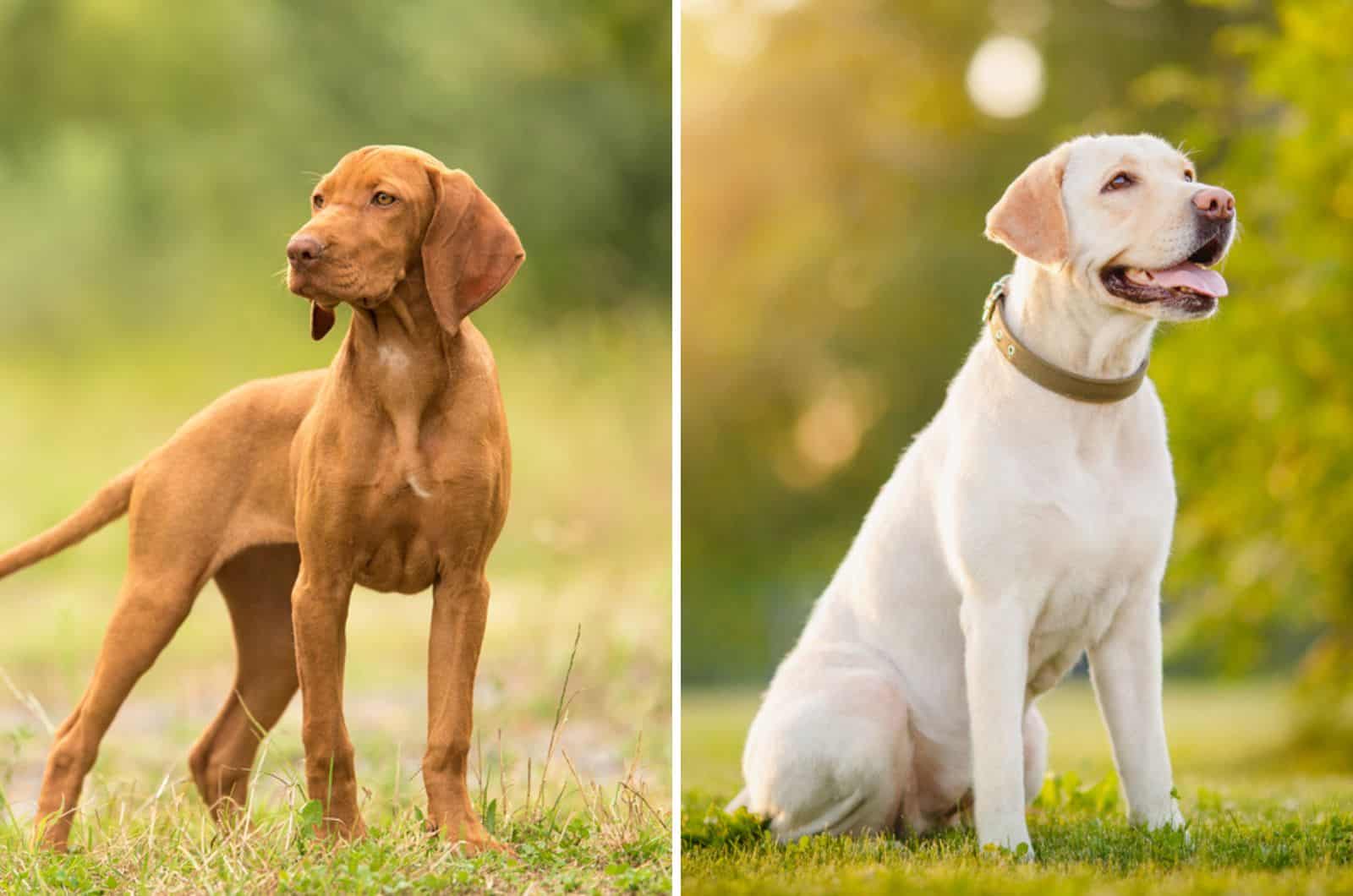Occasionally, the mixes I see give me the impression that people come up with them simply to meld two names into something silly. While Vizslador sounds pretty good, Labrala is a name that does not resonate with me.
Mixed breeds are usually for people who like surprises and love the unexpected. You never know what you will get if you are looking for one.
Let me be clear, a pooch is a pooch no matter the mix, but if you are not satisfied with the levels of activity a Labrador retriever has, mixing in the Vizsla will get you over the line.
If many question marks are plaguing your head about the Vizsla Lab mix, you are in the right place at the right time. I did my best to piece this article so that you long for no additional information. Have fun reading.
The Vizsla Lab Mix At A Glance
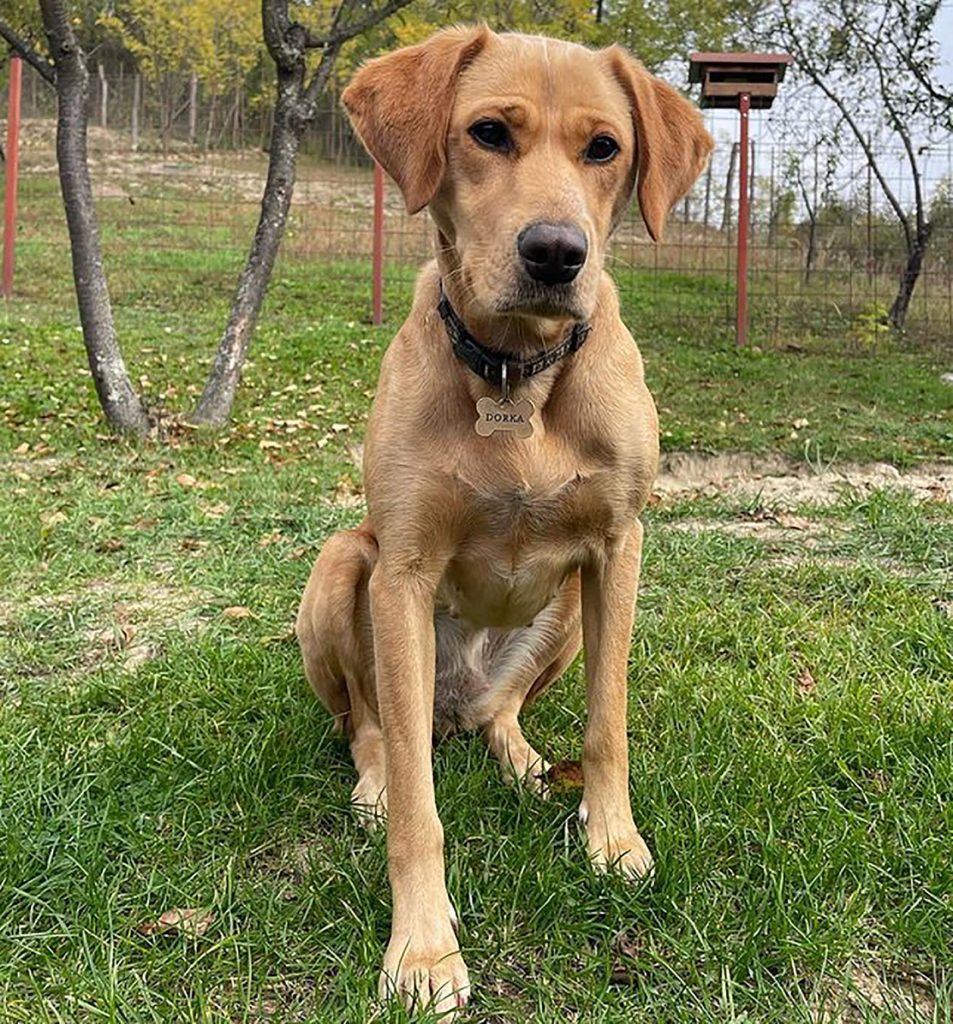
Surely you know most of the things that make a Lab labby, but are you familiar with the Hungarian Vizsla? As a kid, I had an obsession with Labrador-looking hunting dogs like the Rhodesian Ridgeback and the Vizsla.
Unfortunately, I never owned either of the breeds, but I was in the presence of a Vizsla. That is one amazing dog. It has the determination and working drive of a Pitbull with a temper and looks similar to those of the Labrador retriever. To be fair, Labs do have plenty of lookalikes.
Labs always remind me of Disney’s Goofy — they are, well, goofy, affectionate, unaware of their size when cuddling, and love being creatively awkward. So, if you are like me and find both characters appealing, the Vizslador could be the breed for your family.
I have to say that the two dog breeds physically complement each other rather well. In the Vizslador, you get a medium-sized dog from two parent breeds that had similar roles in the past, and you get some unique shades from the many colors a Lab or Vizsla already carry in their genes.
Getting to know each parent breed better is important for the final decision on going on a hunt for Labralas. Tag along in refreshing our memories on what makes each of these two breeds as special as they are.
Two Impressive Histories Make For One Incredible Story
What better place to start with a breed “meet-and-greet” than mighty history? The European continent’s history always makes me realize how different peoples had quite different approaches to dog breeding.
Canada, on the other hand, is an example of a pragmatic take on breeding dogs that are rugged, strong, resilient, and bred for a purpose. So, how did these two dogs turn out so similar but in different parts of the world? Here comes the history train.
The Four Horsemen Of The Apocalypse Are Jelly Of Hungarian Horseback Riders
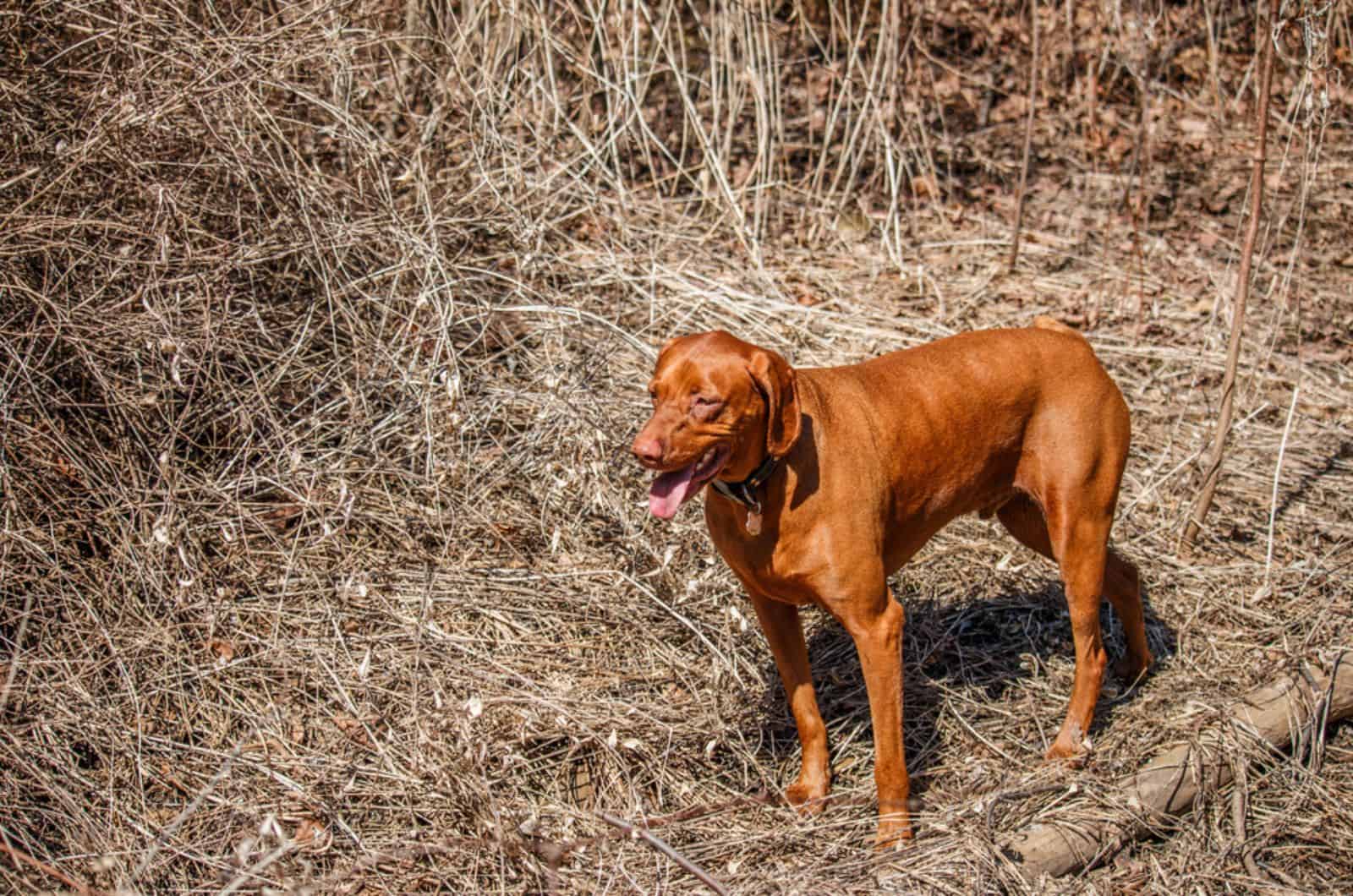
Known for their horseriding prowess, the Magyars were nomadic people who had mastered horse breeding. Used for transportation, war and pillaging, farm work, and hunting, horses were indispensable everyday life companions for the 800 B.C Magyars.
Less known but equally impressive is the fact that master horsemen could not hunt or chase on their own. No matter how got a tracker they had, a dog was necessary to ease life for them.
Horses are fast animals, and following their rhythm is not something any dog could do. Luckily for the Magyars, a red-colored dog with an intense prey drive and unending reserves of stamina decided to show them what it was made of.
Of course, I am talking about the Vizsla. The dog breed as we know it today was established in the fifteenth century, and it is one of the few dogs that did not go through major changes in terms of its looks or role. Good job, Vizsla breeders.
It would take almost half a century for the Vizsla to arrive on US soil. A State Department staff member managed to smuggle one from 1950 Communist Hungary following the aftermath of the Second World War.
Since then, a Vizsla named Chartay has been breaking records, becoming the first simultaneous AKC champion of five different sporting competition categories. Hungarian ancestors must be proud beyond belief.
Vizslas are iconic not only in Hungary but also across all of Europe. You might be surprised by their initial role, from which the breed became one of the ultimate hunting pointer dogs in the world. History field trip time!
Labrador Retrievers Are Like A Bad Decision — They Will Follow You Everywhere
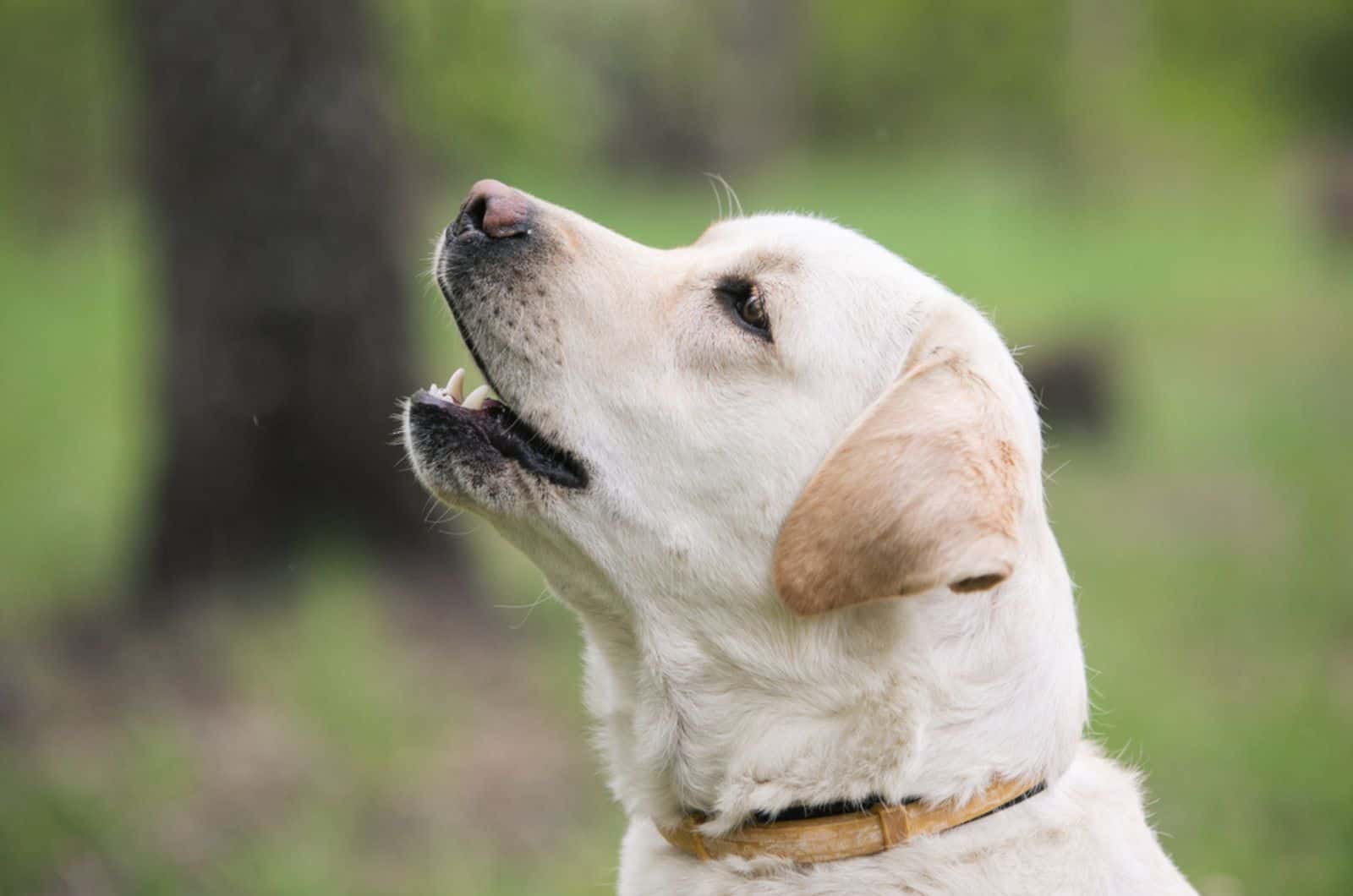
If you put silly in a live being, you get the Lab. Nobody knows why or how their personality developed, but who cares? The important thing is they exist.
Famous for their careers as therapy dogs, service dogs, and good dogs, Labrador retrievers are the most popular dog breed on the planet. Do not brush this title to the side. The competition is fierce — German shepherds, Golden retrievers, and an army of designer dogs at people’s disposal.
An extra feature is their name. You can seamlessly mix it with any other dog breed’s name and get a great-sounding hybrid dog name like the Vizslador. Again, we will start with a short trip down memory lane to refresh our knowledge about the breed’s origin.
The Water Fowl Retriever Disguised As A Family Dog
Back in the day, there was no Labrador retriever, only the Newfoundland water dog. Fishermen and bird hunters from the Labrador region of Canada had been using the Lab as a retriever and working dog.
The British high-brows, of course, had a hand in shaping the breed and name we know today, and during the nineteenth century, started using it for all kinds of sports competitions back in Britain.
Naming the dog that impressed them so much was easy — “here is the Labrador dog we discovered while visiting Canada”. One hundred and fifty years later, the modern-day Lab was a new, improved dog of beauty and respect that would conquer the world’s heart.
This version of the Labrador retriever had a shorter double coat as opposed to its Canadian counterpart because the weather is so much nicer in the UK (not). The role of a sports dog required some adjustments, so the coat was the first one on the list of changes.
To our delight, the playful character and loyalty remained untouched, and families around the globe are now enjoying the Lab’s company. Warning: do not mistake the Weimaraner for a Lab, but do know that there is also a Vizsla Weimaraner mix.
Making A Dual Appearance
Depending on the coat colors your Vizslador’s parents have, you might be the owner of a warm reddish or cream color, an imposing choco-rust combination, or a black hybrid dog. Floppy ears are a given, so the mix will have that highly sought-after mild expression.
A Vizsla Lab mix will have a smooth short coat and probably shed a fair amount in the seasonal coat swap. With the guaranteed athletic build, though, the hair will fall off during intense exercise, so an occasional brushing once or twice a week will suffice.
Physical Characteristics Worthy Of Olymp
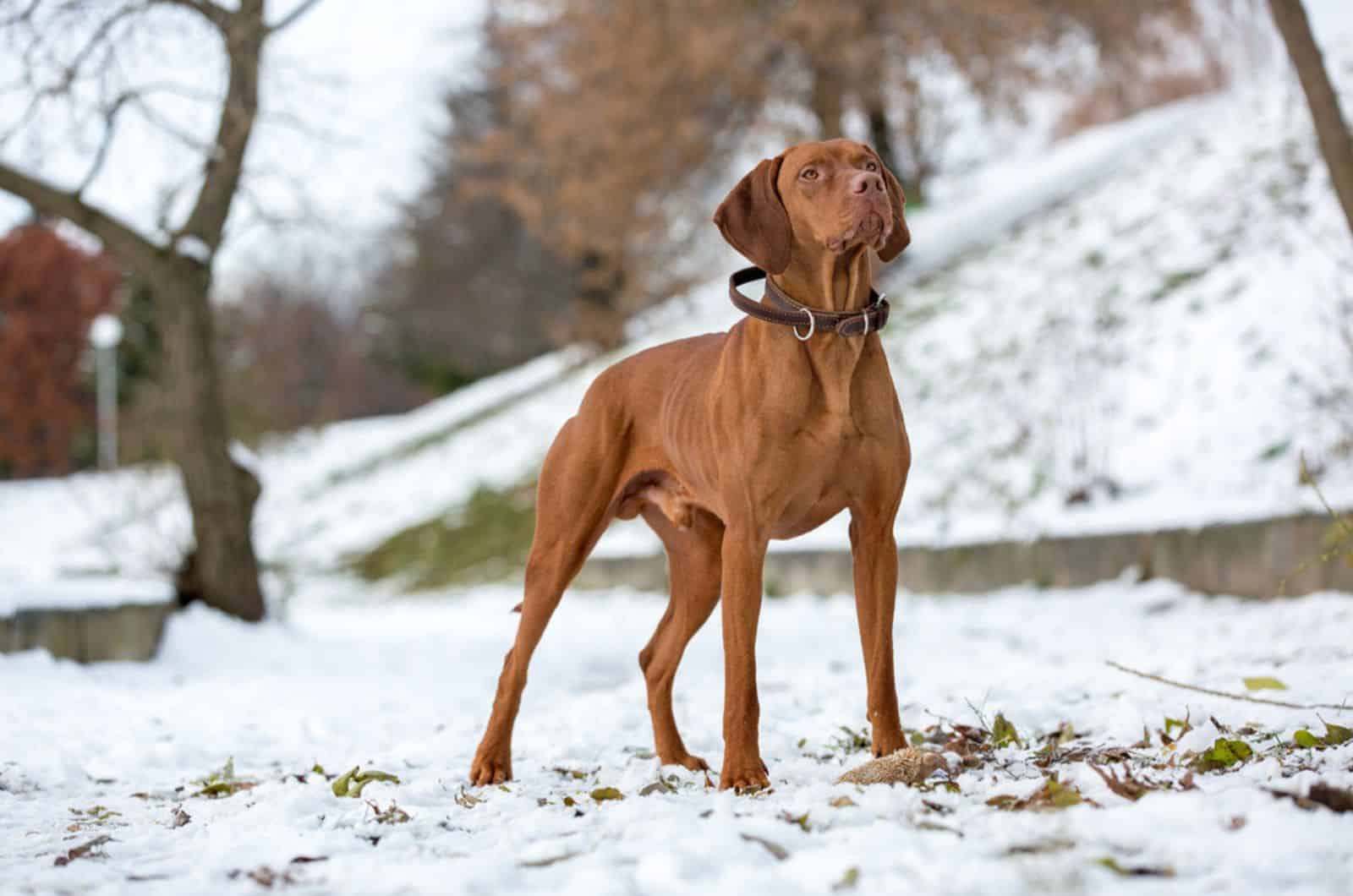
Speed and stamina require a specialized body, so the height and weight proportions are out of this world. Males can be between twenty-two and twenty-four inches tall, with an average weight between fifty-five and sixty pounds.
Females can weigh anywhere between forty-four and fifty-five pounds and reach heights of twenty-one to twenty-three inches.
With the crazy activity levels of a Vizsla, you would think it would have a short life expectancy. No. On average, the breed’s lifespan is live between twelve and fourteen years.
The body frame is athletic and might fool the eye into thinking it is square, but the length of its body is greater than the height, making it a bit like a sedan. The proportions are near-perfect, with a muscular neck of medium length that connects to well-defined shoulders.
In terms of head shape, the skull is almost the same length as the muzzle. The angle that the forehead makes with the muzzle at the connection (stop) is not pronounced, just like the moderately deep eye sockets.
A relatively deep-seated chest extending to the dog’s elbows should have defined but not protruding ribs. The back is straight without any curvature, ending in a tail that is level with the lower back. The American Kennel Club breed standard gives extra points for a docked tail.
Distinguished Coat
The Vizsla is known for its glossy, short, and dense coat. It is built to resist the elements without having an undercoat. There are several coat colors that purebred Vizslas can sport, with the golden-rust being the trademark of the breed.
While golden rust is the only color recognized as standard by the AKC, different shades are possible and include golden, red golden, rust golden, red, rust, and sandy yellow. White markings on the forehead and paws are permitted but not considered standard.
A smooth short coat means no grooming headaches, but the Vizsla does shed moderately. They are not known for their drooling potential, so no need to worry about wet stains all over the furniture.
If Yolks Could Be Dogs, They Would Be Labrador Retrievers
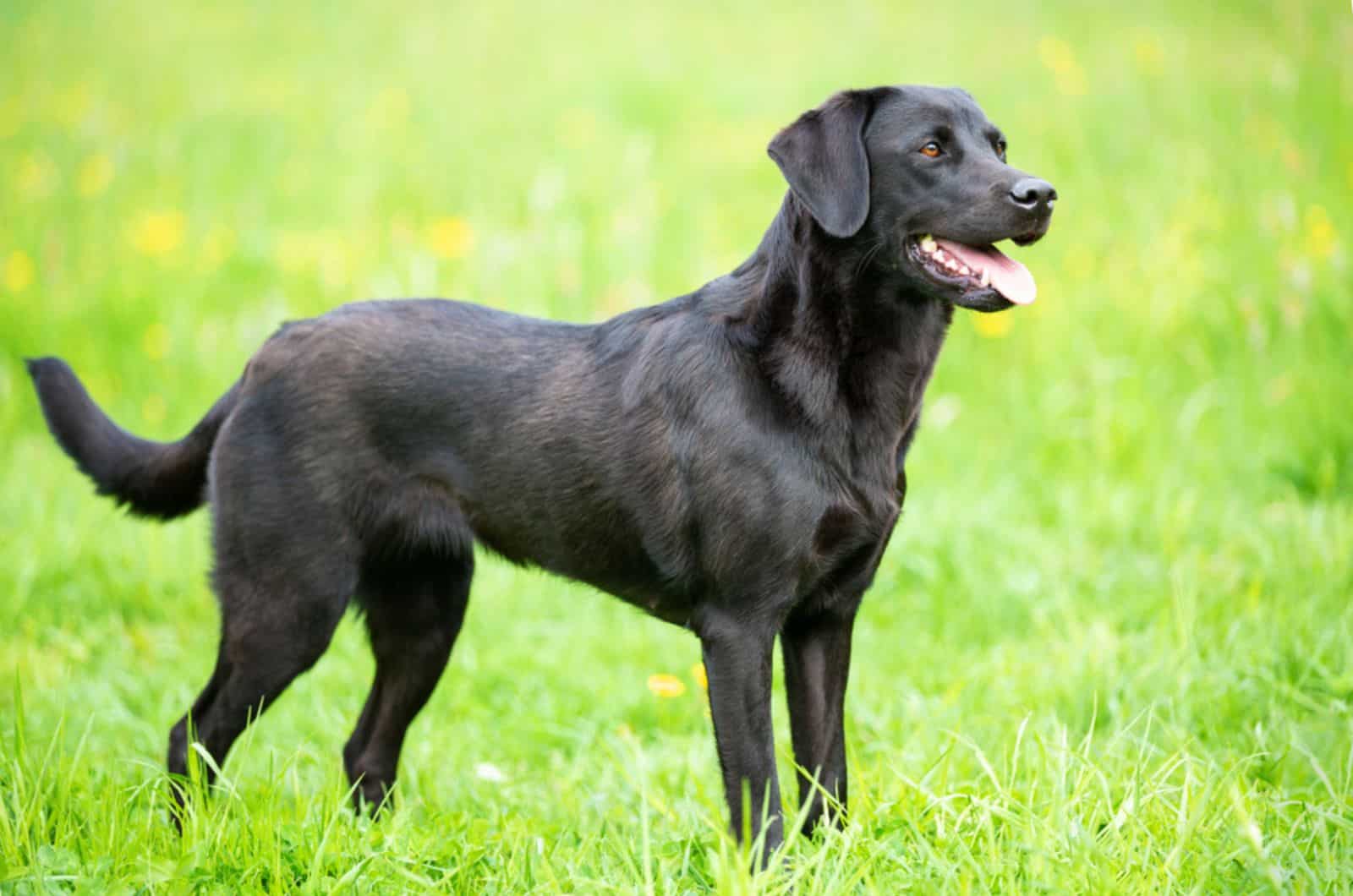
Weighing in between sixty-five and eighty pounds, with a height of twenty-two and a half to twenty-four and a half inches, the male Labrador retriever is cute.
Slightly lighter at fifty-five to seventy pounds and a height of twenty-one and a half to twenty-three and a half inches, the female Labrador retriever is cute. You thought they were not equally cute, didn’t you? Have a look at which one is better for you.
The average span of a Lab is between eleven and thirteen years, coming in second to the Vizsla. Regardless, you will be stuck with the mess it does for at least a decade.
Unlike the Vizsla’s lean athletic body frame, the Lab’s is more squared and muscular. The skull is wide but not disproportionate to the rest of the dog’s body, and the angle at which the forehead meets the muzzle is visible.
The brow bone is slightly pronounced, but the muzzle follows the skull’s equilateral proportions. Lab noses are wide with prominent nostrils, and it has to be colored black on yellow and black Labs but brown in chocolates.
Chest is moderately wide, neck visibly muscular and of medium length. The shoulders should be muscular and complement the proportions set by the wide chest and thick neck. The back is straight and ends in a tail that narrows into a point at the end (otter tail).
Labs Always Carry A Coat For Rainy Days
Everyone and their dog knows that Labrador retrievers have a short, smooth double coat. There are three colors considered standard: black, yellow, and chocolate. The chocolate one is probably the rarest, and I am guessing you want that one.
There are other color variations like white, red, charcoal, silver, merle, brindle, black, tan, etc. Keep in mind that all colors except the standard ones and white and red are genetic mutations of the gene responsible for pigmentation.
Bad news for people who have dog allergies: they shed quite a lot. I know, it is bad luck if you wanted one but could not handle hairs flying everywhere. However, they require little grooming to be at their best, so that is a plus.
Labrador retrievers drool a little more than the Vizsla, but that should not affect you or your family members in any meaningful way. The toys will be soaking wet, I can tell you that much.
Nerves Of Steel That Love To Heel
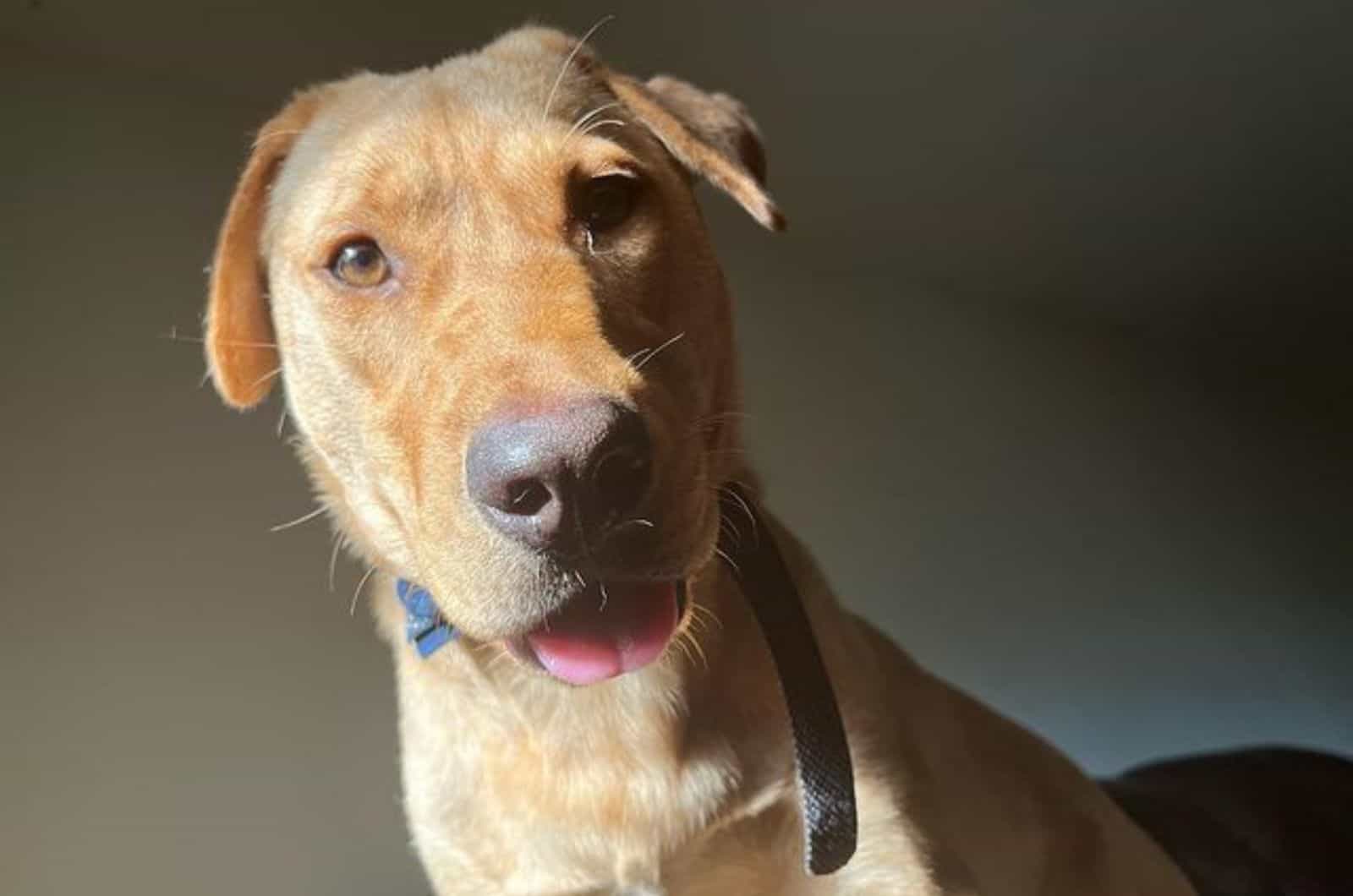
With hybrid dogs like the Vizsla Lab mix, there is always an element of surprise in terms of some features like height and weight, but the temperament will be that of a great family dog. Labralas are fun-loving canines despite these couple of unknowns.
In addition to being extremely trainable, their playfulness takes the cake. There will be no part of the day not good enough for some frisbee catching, lure chasing, or fence jumping. The Vizslador’s openness to strangers will create zero problems in terms of entertaining guests.
A Tempered Temper
People have been breeding and owning dual-purpose dogs for centuries, dare I say millennia. Some of the greatest high-energy breeds, like the two we are talking about, make for incredible family dogs.
A relentless need to work and fulfill a purpose makes the Vizsla an immaculate blend of a working dog and a family pet. They are okayish watchdogs, but the excellent trainability allows you to train them to do virtually anything.
Obedience training will be a breeze with this dog breed. You will probably look forward to teaching whatever you got planned next. That is good, too, because the mental stimulation needs are equally high and important as physical exercise.
You could go crazy building your own agility course, doing some nose work, etc., or simply make the normal obedience training into a dog-genius teaching course.
Something else to thank Vizslas for is their adaptability. Apartment or house, city or farm, it will be more than happy living with you, as long as you provide it with lots of physical activity.
Socialization And Family
Guests are welcome to your home. Vizslas do not care much about strangers unless they are an opportunity for playtime. Again, following the trend of high-energy levels, the breed is exceptionally playful, and mischief is a possibility if they get bored.
It is a well-known fact that Vizslas can hunt falcons, so twenty daily walks will not do it for this one. You will need to sweat your way to please the Vizsla. A good alternative to hunting for those living in the city is biking or hiking if you live near a trail.
Active dogs require active owners, so you should keep in mind this dog requires even more physical activity than a Belgian Malinois. In terms of socialization, hanging out with other dogs is no problem, and children will find their energy match in a Vizsla.
This breed bonds very closely to the owner, and long periods of solitude and boredom can cause separation anxiety in Vizslas. This is why you should not get one if you are often away from home, or you might find your house interior in slight disarray.
Sweet Disposition
Is a Labrador retriever temperament section even necessary? I do not think so either, but my editor made me do it.
Where do I start? Maybe the first thing to tell you should be how unfathomably sensitive these dogs are. Their reading of a situation is sometimes better than what many humans can do, and I really do mean this.
It is no coincidence that they are a favored dog breed for the duty of service and therapy dogs. Holding the first spot in popularity in the world confirms the fact that it is a good family dog.
Being a watchdog is not their main trait, but they are intelligent enough to know when something is off. They bark less than Vizslas, but you should be fine with the frequency of it.
Labs are high-energy dogs with a high trainability ceiling, so no job is out of their reach. It is not all about running wild. They need mental stimulation too, which means you need to have your wits about you when planning out an exercise regime.
Social Game And Housebreaking
When you are feeling down, your Lab will gladly entertain the guests. Coming home from work and finding out your Lab threw a great brunch for the neighbors should not be surprising.
If the Labrador could speak, the one question that would come up so often that it would kill your will to live is, “Are we playing now?”. In case you did not read the memo, they are out-of-this-world playful.
They are great with other dogs and love children. Do not be shocked when your Lab brings another friend from the dog park into your house. Deer and bears also make great buddies for them.
When your Lab is not in the velcro mode, stuck to your leg and seeking all the attention, it might cause damage to your couch, shoes, or other household items. Boredom easily finds them, so crate training is essential in teaching your Labrador retriever to have a place to rest and avoid trouble.
Food For Thought And Thought For Food
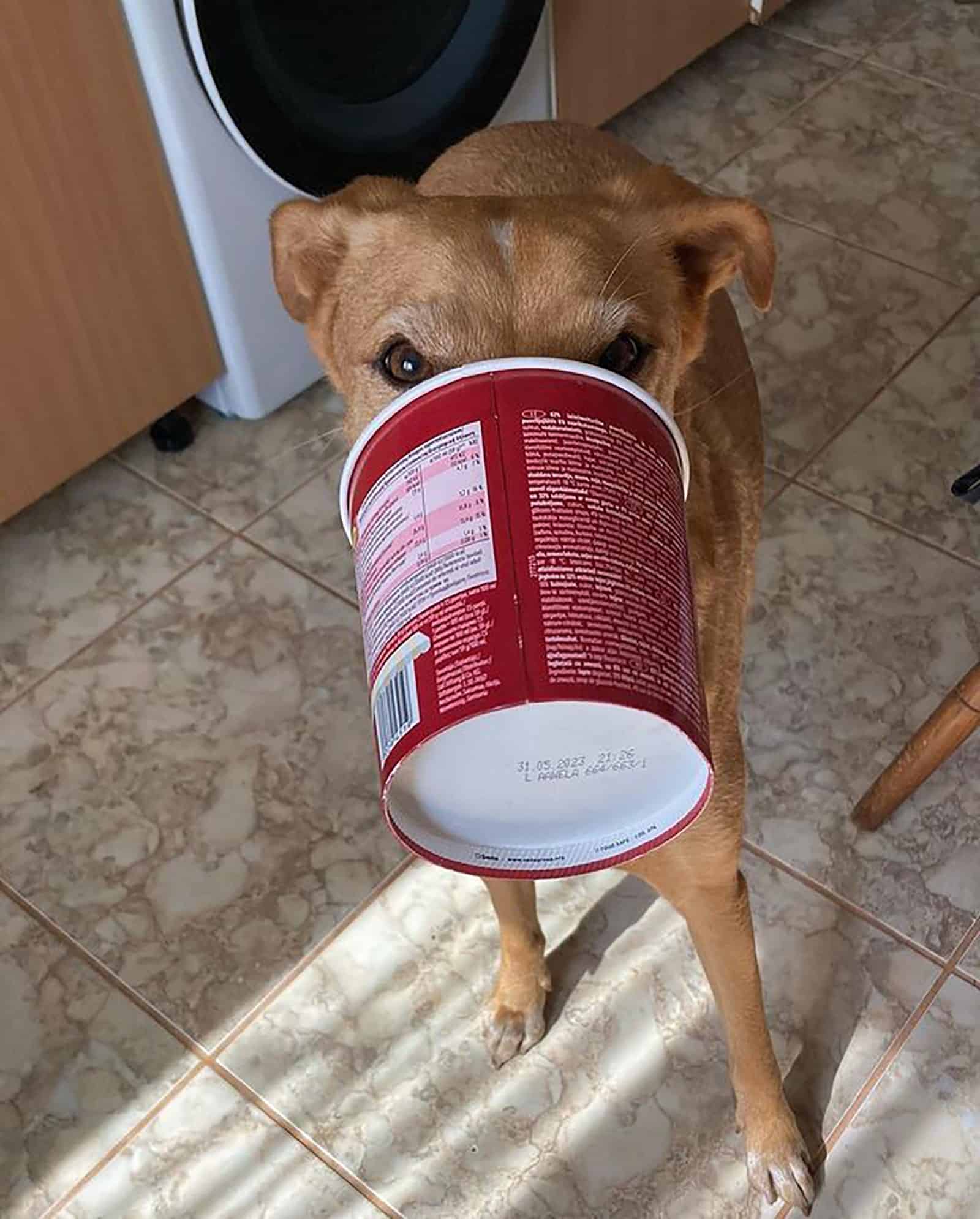
Feeding your Vizslador a good dog food diet means a healthy dog. High energy demands a high-calorie diet, so you will need to be careful when choosing food options for your Vizsla Lab mix.
There are a few things to consider when it comes to setting up the perfect diet and feeding routine for such high-energy dogs, such as nutrient balance, meal size, choice of diet, and more.
A Vizslador will enjoy a high-protein diet, but the fat and carbohydrates will require a lot of intense exercise to avoid obesity problems. Fast hunter dogs are bound to eat fast, too, so make sure the daily dose of food is split into at least two meals.
Food And Eating Habits
Cheap commercial foods are not a good fit for any dog, but for this dog breed, they are terrible. High-protein and moderate fat and carb meals will be perfect for a gun dog such as a Vizsla.
There are several options in terms of the type of diet — kibble and wet food, raw diet, or home-cooked.
To see what a raw diet is all about, check out this article debating whether Rottweilers should be on it or not (the same applies to Vizslas, too) and a cooked chicken recipe for all of you who like to chef-up your dog’s meals.
Feeding your dog high-quality food is not the only thing you need to take seriously. Vizslas can become obese if exercise is lacking, so make sure to balance the calories and physical activities.
Feeding A Lab With Love Is Almost Enough
They are big eaters. Chowing down food at the speed of light is a special skill they developed over the years, and instilling good eating habits is crucial from a young age.
Just like the Vizsla, a Labrador retriever requires a balanced diet that will include lots of protein to maintain muscle mass and enough fat and carbohydrates to keep energy levels high.
Being muscular foodies, you have to pay attention to the dosages. A Lab will quickly become overweight, or even obese if you do not match the physical activity with the amount of food fed.
This dog breed is more susceptible to weight gain and obesity, which means you will need to do a lot of work in terms of regular exercise and nutrient balance in every meal.
Good Health Means Prevention
It is never a good thing to wait for problems and then deal with them. Health problems that damage your dog’s body in many cases cannot be reversed, but awareness of them can help you lower the chance they will affect it.
Congenital defects are often ingrained in a breed’s genetics, so prevention is sometimes impossible. If you are looking to get a Vizslador, then the health conditions listed below can be part of your and your dog’s life, and it is best you know how they affect the body and mind.
Be particularly wary of bloat, GDV, and hip and elbow dysplasia, as both breeds are prone to them. Choosing a breeder that performed other genetic tests on the Vizslador’s parents will make sure you avoid more serious hereditary diseases.
Health Issues In Vizslas
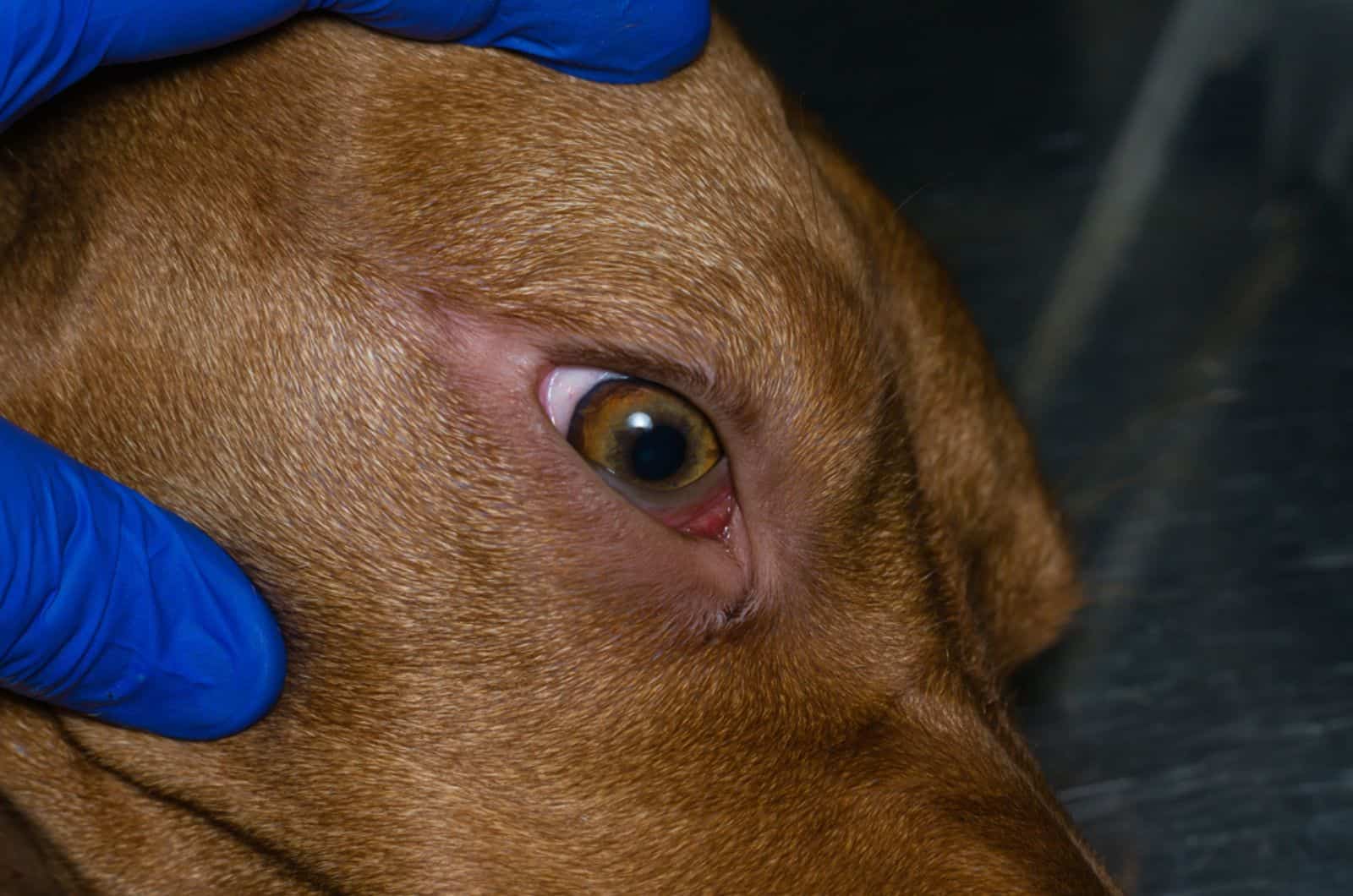
A life expectancy of up to fifteen years means that the breed’s health is above average. However, excluding all health problems when it comes to any breed is unrealistic, so manage your expectations.
Serious conditions such as hypothyroidism, epilepsy, and progressive retinal atrophy (PRA) are possible and, unfortunately, are congenital. This means that somewhere along the way, a parent with bad genetics was introduced into the breeding program.
Less grave, but still a problem, the notorious hip dysplasia is present in Vizslas too. For such a high-energy, active dog, hip dysplasia can be the worst punishment possible. Here is a little bit more about each of these conditions.
Hypothyroidism
The thyroid is an important gland that regulates many body functions, such as body temperature, enzyme secretion, energy levels, and metabolism. One that does not produce enough hormone (thyroxine and triiodothyronine) causes this condition.
Hypothyroidism symptoms include a degraded coat, lethargy, sudden weight gain, and a sensitivity to cold. The most common cause of hypothyroidism in dogs is idiopathic thyroid gland atrophy, which means that the cause is unknown.
A lifelong therapy of synthetic hormones is necessary for a normal quality of life. There is no treatment for the idiopathic version, only hormone therapy, and secondary care.
The other cause is lymphocytic thyroiditis (Hashimoto’s). It is the prevailing cause of hypothyroidism in dogs, and it involves the same treatment as idiopathic thyroid gland atrophy.
An autoimmune problem with no known cause mistakes the gland for a foreign body and tries removing the threat.
Epilepsy
Similar to hypothyroidism, epilepsy can be idiopathic (assumed inherited), of unknown origin, or structural. Both idiopathic and structural epilepsy show abnormalities in the brain, but epilepsy of unknown origin often cannot be diagnosed by any means available to us.
Epilepsy can cause seizures that are localized (focal seizures) or affect the entire body (generalized seizure). In the case of focal seizure, the dog will have involuntary muscle contractions or loss of control of a specific part of the body.
Generalized seizures affect both brain hemispheres, which means the symptoms are body-wide and include collapse, uncontrolled drooling, pooping or peeing, and severe disorientation.
Treatment includes the use of anticonvulsants, and the dog will need to receive therapy for the rest of its life. In most cases, though, quality of life is good after diagnosis and with continuous treatment.
Progressive Retinal Atrophy (PRA)
This condition can be described as several diseases that damage the eye over time, leading to a complete loss of vision. There are two types of PRA — early onset and late onset. The name Progressive retinal atrophy is used for early onset and retinal atrophy for late onset.
Early onset simply means that it can be diagnosed early in a dog’s life. In most cases, that period is between two and three months of age. For retinal atrophy, the age when most dogs are diagnosed is between three and nine years.
Aberrant photoreceptor cells that develop during the puppy’s growth stage characterize the early onset type, while the same cells start deteriorating in dogs with retinal atrophy. Either way, both lead to blindness.
A cure does not exist, and the only available treatment is secondary care. You will have to change things around your house for a dog with progressive retinal atrophy. Such a change in the quality of life requires lots of patience.
Hip Dysplasia
The condition starts developing during your dog’s growth stage. The ball of the hip joint does not properly develop, so the socket (hip bone) and ball do not have a perfect fit. While moving around, the two bones will put too much pressure on the cartilage and begin wearing it off.
Without the soft tissue that provides a smooth movement of the hip joint, bones will come in direct contact and cause irreparable damage. Ultimately, it will cause arthritis, and your dog will be in great pain if it is left untreated.
The condition becomes worse with age, and symptoms include difficulty moving, unnatural lying and sitting positions, sudden limping, etc.
Therapy usually consists of reducing the pain with the use of NSAIDs, but the actual treatment is only surgery. Depending on your dog’s age, there will be several types of surgery. The younger the dog, the less complex but more successful the surgery will be.
Labrador Health Is Becoming A Concern
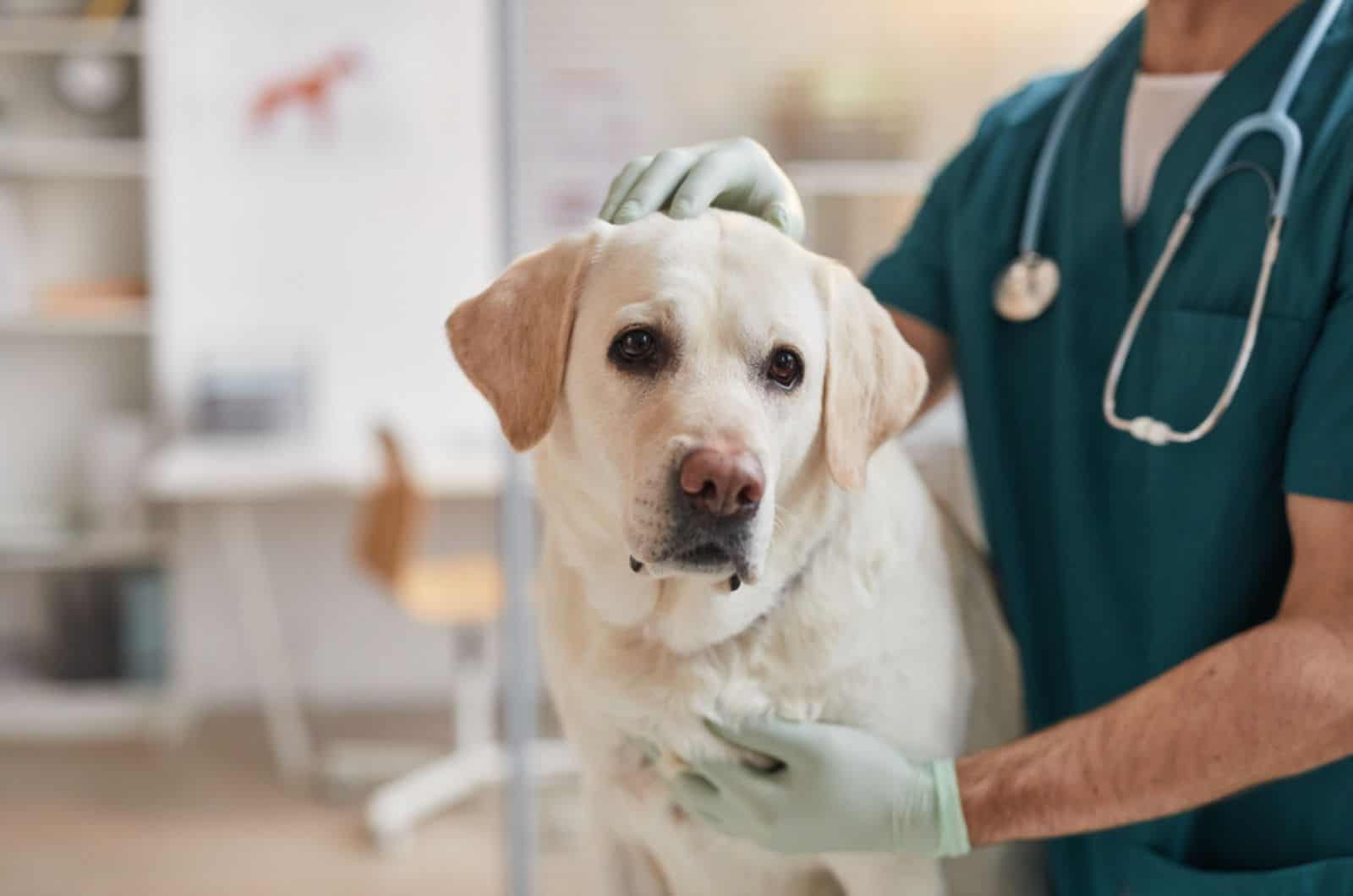
A dog’s well-being is the most important thing to every dog owner. Unfortunately, there are several health issues that Labrador retrievers are prone to.
Some of those conditions are pretty serious and can be fatal, while others are annoying but manageable without hindering the dog’s quality of life.
Bloat, elbow dysplasia, ear infections, tricuspid valve dysplasia, exercise-induced collapse, and centronuclear myopathy. There are other conditions that we already covered with the Vizsla but are applicable to the Lab too.
Bloat And Gastric Dilatation And Volvulus
It is not known exactly why Labrador retrievers are prone to bloat and GDV, but it can be connected to their frantic pace of living life. Eating food too fast without chewing can create pockets of empty space in the stomach, which leads to bloat.
While bloat can resolve on its own, many cases, if left untreated, become gastric dilatation and volvulus. This condition can be fatal for dogs.
A stomach has two sphincters that allow food entry through the esophagus and exit towards the small intestine. These are the only two conduits of food in and out, so if the bloating (swelling) keeps increasing, the stomach itself can twist in a manner that closes these sphincters completely.
If that occurs, your dog will be in pain, and the pressure put on major arteries and capillaries in the chest area can cut off blood flow to the brain, causing a collapse. Surgery is the only treatment for GDV, so if you notice swelling in the stomach, even without pain, rush your Lab to the vet.
Prevention is always the best option, so make sure your Labrador retriever eats at least two smaller meals every day to avoid the formation of air pockets in the stomach.
Elbow Dysplasia
I believe you already know what this condition means. If you read the hip dysplasia segment in the article, you will know that the elbow joint is similar to that of the hip and that the malformation of adjacent bones during the growth stage of your Lab puppy will cause cartilage deterioration.
Once the cartilage is gone, the bones scraping one another will damage the tissues, causing arthritis, which cannot be cured but can be managed. To fix the anatomical issues, your puppy or adult dog will have to undergo elbow surgery.
The symptoms of elbow dysplasia include most of those from hip dysplasia. Poor balance, awkward sitting and lying positions, refusing to exercise, limping, etc.
Ear Infections
The accumulation of water (because Labs are semi-amphibians) in the ear creates a moist environment for bacteria, fungi, and viruses to multiply. Because Labrador retrievers have floppy ears, the moisture has issues escaping and further complicates your and your dog’s life.
However, this predisposition to ear infections could be genetic, too, since other dog breeds, like the Beagle (with longer ears and even less room for water to drain), are not susceptible to ear infections.
Ear cropping was believed to help prevent ear infections, but doing that to a Labrador is crazy. If you want to find out more about it, read this comprehensive article on Lab ear cropping.
While outer and middle-ear infections are most common, inner ear infections can be a sign of an untreated otitis externa. If you notice a lot of head tilting, loss of hearing, discharge from the ear, balance issues, head shaking, and scratching the ear, take your dog to the vet.
Tricuspid Valve Dysplasia
Yet another dysplasia plaguing poor Labs more than most species. It is characterized as a malformation of the tricuspid valve, which means the valve does not properly close. This leads to the regurgitation of blood back into the right atrium.
While the defect is not directly fatal or painful, it can lead to right-sided congestive heart failure that results in an enlarged heart that is unable to adequately pump blood throughout the body.
If the TVD is mild and the defect is not severe, treatment can be medication, but if RSCHF develops, your dog might have to go through regular abdominocentesis in addition to oral medications.
Exercise-Induced Collapse (EIC)
This is a congenital condition that requires both dog parents to pass on a recessive gene to the Lab puppy for it to become active. Genetic DNA tests can show the potential for EIC development, so if your Lab has it, then the breeder knowingly omitted it from you or is not doing health checks.
The good news is that in many Labs, among other species prone to EIC, the symptoms never show because the autosomal reaction is never triggered. If there is a collapse, it will “announce” itself through a weakness in the hind legs.
Some studies suggest that neutering a male Lab increases the activity threshold necessary for EIC to kick in. It is important to note that there is no cure or treatment but that the weakness and collapse resolve themselves after five to twenty-five minutes of complete rest.
Avoid strenuous exercise if your dog has EIC, and make sure to make your dog take breaks in-between playtime or training sessions.
Centronuclear Myopathy
Being a congenital condition, centronuclear myopathy means that your Labrador retriever’s genetics are a fault of the breeder, not health testing or refusing to disclose genetic defects in the dog’s parents.
A mutation in the protein that is part of the process of producing fatty acids causes the underproduction of the gene responsible for defining muscle tone. One of the symptoms includes loss of muscle tone, but there are several others, like exercise intolerance and a faulty gait.
Both parents have to be CNM positive for your Lab to inherit the mutation. If only one parent tests positive for CNM, then half of the litter will carry the recessive trait but will not have the symptom.
No treatment is available for centronuclear myopathy, but secondary care has proven to be beneficial for dogs with the condition. Keeping the dog in a warm environment, in addition to some supplemental medication prescribed by the vet, can help in terms of comfort.
A Complete Guide To Finding A Vizsla Lab Mix Puppy

I have to disappoint you here — there is no guide for Vizsla Lab mix dogs. Since they are not purebred or pushing to become an independent breed, you will have to wing the entire process. What I can do is give you some pointers regarding breeders and what to keep an eye out for.
The most important thing is having access to the health screening certificates of the Vizslador’s parents. A breeder who is not transparent about the genetic testing of the Vizsla Lab mix parents should be avoided.
Because you cannot register your Labrala puppy with the AKC, nobody can really force a breeder of hybrid dogs to provide papers confirming no genetic disease that your potential pup could inherit.
Pricing is also important. Crazy high or crazy low prices are a red flag. Many “breeders” are actually backyard profiteers who disregard ethics while mating dogs. Puppy mills are another thing to avoid since there is no control over pairing dogs, let alone genetic testing.
Closing Words
Getting a Vizsla Lab mix is a form of gambling, in my opinion. Finding a breeder who practices ethical breeding is hard. It is much harder to manage expectations. For a mixed breed to have predictable traits, it requires years and years of multigenerational breeding.
The Vizslador is not in that phase yet, and a fifty-fifty mix will yield results that can be at either end of the spectrum. If you like knowing what you get, I think you are better off looking for a purebred Vizsla or Labrador retriever, depending on which one is a better fit for you.
Medium size, floppy ears, a short coat, lots of energy, and affection for their families are traits that make this mix appealing, and you might not care at all about the mystery features. I would compromise certainty for that set of traits for sure.
If you are dead set on getting a Labrala, then be meticulous with the research you do. Breeders with a lot of photos, information, certificates, and health checks will be glad to show it all to you as a sign of conducting ethical practices in breeding.
Always consider adopting a rescue dog that fits the profile of the dog you are looking for. You will at least know what is going on health-wise, and the dog will have a clearly defined physical appearance and temperament without any lottery stuff involved. Also, you do not pay for it.
Stay curious, determined, and good luck with your search for a Vizslador.
Read Next: Dalmatian Lab Mix: Watch Out, It Might Steal Your Heart
